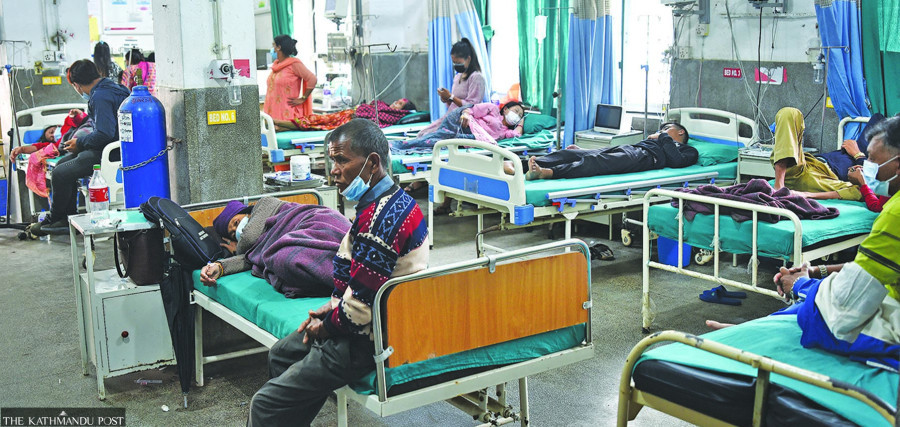Health
Government sets aside a meagre 4.6 percent of the annual budget for the health sector
Experts say health care is not in priority of the incumbent government, and the allocated amount is even insufficient to run the existing programmes.
Post Report
The government has allocated Rs86.24 billion to the health sector for the upcoming fiscal year, around a 2.5 percent increase from the 83.99 billion allocated for the current fiscal year.
The new allocation is only around 4.6 percent of the total budget.
Funds have been allocated to give continuity to most of the ongoing programmes—safe motherhood programmes, free essential medicines, setting up basic health care centres in all wards throughout the country, and financial relief to people from difficult and expensive diseases—cardiovascular disease, cancer, renal failure, Alzheimer’s disease, Parkinson’s disease, head and spinal injury, sickle cell anaemia, and stroke.
The health budget also includes grants to Tribhuvan University Teaching Hospital, Nepal Police Hospital, Nepal Army Hospital, Civil Hospital, and others.
The national budget has announced a few new programmes, including the establishment of the Sita Dahal Memorial College of Naturopathy and Yogic Science under Kathmandu University. Sita Dahal is the late wife of Prime Minister Pushpa Kamal Dahal, who died in July last year.
Health experts said that the incumbent government neglected the health sector this year, too, as a slight increase in the annual budget does not help to continue the existing health programme.
“How can we achieve the Sustainable Development Goals targets from the budget allocated to the health care sectors?” said Mahendra Prasad Shrestha, former chief specialist at the Ministry of Health and Population. “We need to bring qualitative change, and for that, huge investments are required.”
Several healthcare programmes, including safe motherhood programmes, child health programmes, tuberculosis control, nutrition, vector control programmes, epidemic control, non-communicable diseases, and mental health programmes, have already been affected by the cut in the previous year’s budget.
Likewise, the budget doesn't address the growing burden of non-communicable diseases.
Non-communicable diseases—such as heart disease, stroke, cancer, diabetes, and chronic lung disease—have emerged as major public health problems of late, accounting for 71 percent of deaths in the country.
A 2019 study by the Nepal Health Research Council on the prevalence of noncommunicable diseases, which primarily focused on behavioural risk factors—tobacco and alcohol consumption, biological risk factors, raised blood pressure, overweight, obesity, abnormal lipid prevalence, coronary artery disease, chronic obstructive pulmonary disease and diabetes—found non-communicable diseases have emerged as a major killer.
Nepal has witnessed several outbreaks in recent years—dengue, cholera diarrheal diseases, and other vector-borne diseases. The country has failed to achieve the malaria elimination target.
“Every hour, one person commits suicide, the burden of non-communicable diseases has increased alarmingly, and neonatal deaths have not declined in the past several years,” said Shrestha. “Several programmes of health, including a free screening of cervical cancer and renal problems in the state-run health facilities, could not be implemented due to various reasons. The budget allocated for health even does not support continuing the ongoing programmes.”
Experts caution that budgetary cuts in crucial healthcare programmes would have a long-term impact and could affect the achievements made over the years.
“The government has not allocated the health budget to strengthen the federal structures,” said Dr Padam Bahadur Chand, former chief of the Policy Planning and International Cooperation Division at the Ministry of Health. “Most of the health budget will be spent on the salaries of the staffers.”




 9.12°C Kathmandu
9.12°C Kathmandu












%20(1).jpg&w=300&height=200)
